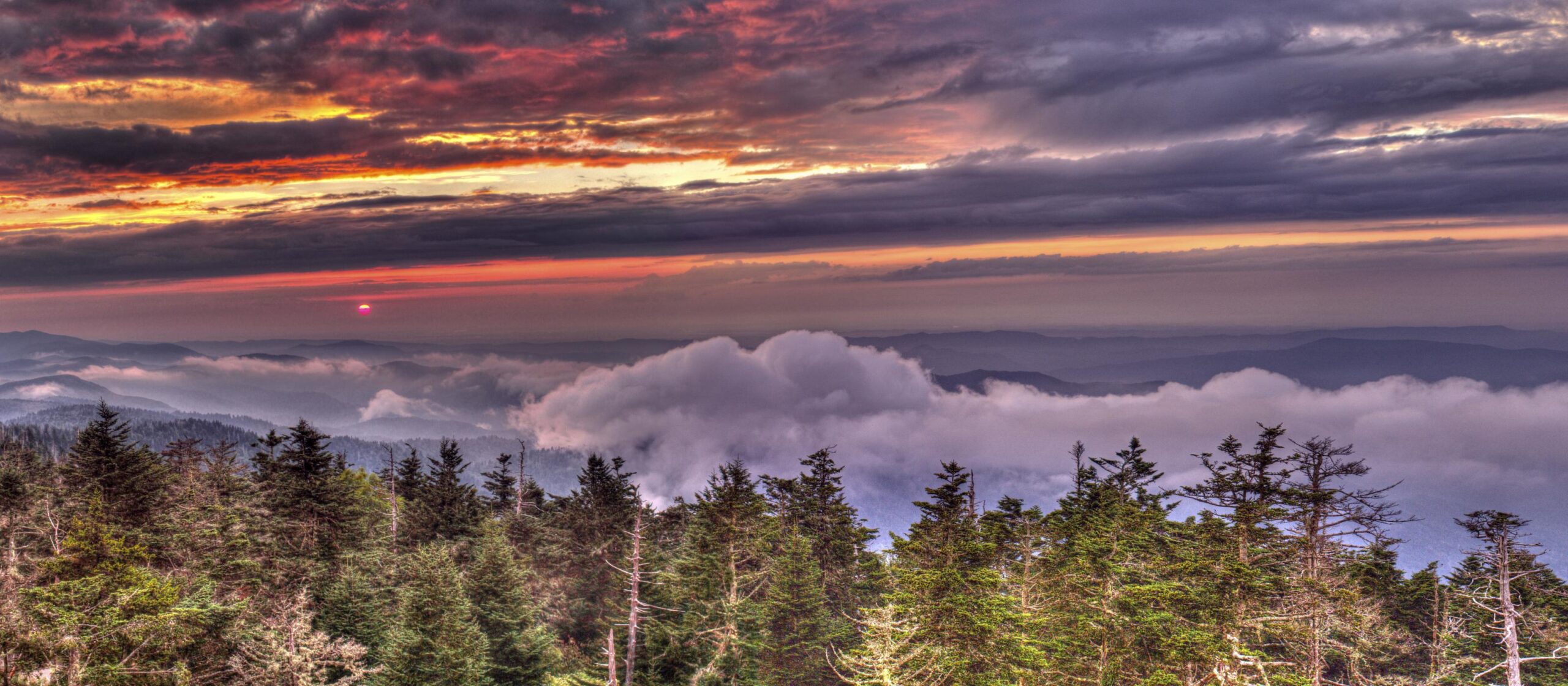The border between the states of North Carolina and Tennessee in the Southeast is home to one of the most magnificent expanses of unspoiled wilderness in the East.
Within the Great Smoky Mountains National Park, there are mountains and verdant forests covering about 211,000 hectares of land that can be explored on foot, by bicycle, or by car. There are sixteen peaks in the park that are higher than 1,800 meters. The park takes its name from the blue-gray haze that frequently shrouds them. Viewed from pullouts along the park’s byways, the lush peaks and hills seem to roll indefinitely into the distance. Dense, old-growth woods cover the mountains.
How to Reach the National Park of the Great Smoky Mountains
The Great Smoky Mountains National Park is located 60 kilometers west of Asheville, North Carolina, and 314 kilometers east of Nashville, Tennessee. Visitors can enter the park from Cherokee, North Carolina, or Gatlinburg and Townsend, Tennessee. Even though Great Smoky is often one of the most popular national parks in the United States, with up to 10 million people annually, you can still find tranquility there.
In the Great Smoky Mountains, Nature and History Collide
The park is one of the biologically most diverse places on earth because of its varied topography and mild climate. Elk, black bears, and deer are among the more than 17,000 plant and animal species that have been identified in the Smoky Mountains. The park’s history at Cades Cove, the Mountain Farm Museum, and other locations is intricately intertwined with the culture of the Appalachian Mountains.
The Great Smoky Mountains National Park is home to over 17,000 known species of both plants and animals, demonstrating the park’s extraordinary ecological variety.
Hit the (Park) Roads
The roughly 18-kilometer Cades Cove Loop Road runs through the Cades Cove Valley and is the park’s most popular route. This lush valley, surrounded by mountains, is a great place to see wildlife. Scattered over the valley are numerous structures from the late 19th and early 20th centuries, including churches, barns, and grist mills.
Drive the 53-kilometer Newfound Gap Road to the summit of the park’s mountains, which is over 900 meters above sea level. Pullouts along the roadside provide great views of the surrounding pine oak and spruce fir forests, as well as expansive valley panoramas.
Hiking in the Great Smoky Mountains
The Great Smoky Mountains are sliced through with sharp mountain streams and roaring waterfalls. Explore the park’s roads and find well-marked trailheads where you may start your hike to one of the many breathtaking waterfalls. The 24-meter-high Laurel Falls may be reached by a 4-kilometer round-trip walk, while the 27-meter-high Hen Wallow Falls can be reached by a 7-kilometer round-trip journey through hemlock and rhododendron forest. There are 1,290 kilometers of easy to challenging hiking paths spread across the area.
Almost 1,300 kilometers of hiking trails are contained with in the park, including many that lead to waterfalls.
Learn about the Smoky Mountain Heritage
The Cataloochee Valley is one of the park’s more sedate areas. A school, a barn, and houses from the late 19th and early 20th centuries are among the historic structures that still house remnants of the rich Southern Appalachian cultural legacy of the area. Visit the Mountain Farm Museum, which is situated behind the Oconaluftee Visitor Center in the park, to gain a deeper understanding of what life was like in the Smokies in the 19th century. Several old log buildings, including a smokehouse and a blacksmith shop, make up the museum. Even reenactors will do living history demonstrations.
The well-known American folk ballad “On Top of Old Smoky” is credited with inspiring the tune. With a height of over 2,000 meters, it is the highest point in the park. Proceed to the summit by driving up Clingman’s Dome Road. After that, take a steep 0.8-kilometer walk that leads to an observation platform that offers 360-degree views of the surrounding valleys and mountains.
The Smokies in the Spring and Fall
Even though summer is the busiest season to visit the Smokies, autumn brings a large influx of visitors who come to take in the breathtaking displays of red, orange, gold, and brown leaves. Take a drive around Cades Cove Loop Road to get a close-up look at the fall foliage, and then head up Newfound Gap Road to see the rich hues from above at scenic locations like Campbell and Web viewpoints.
Look for the park’s synchronous fireflies’ flashing lights in the early evening hours of late May to late June. This species of firefly mates in the park for two weeks out of the year. The fireflies coordinate their light flashing as a part of that mating ritual. Now a significant attraction, the unusual occurrence is accessible to visitors via a shuttle service provided by the park.
Although the park sees a lot of traffic in the summer, in the fall, don’t miss the breathtaking display of changing leaves.
Where to Eat and Stay
There are thirteen campgrounds in the park where you may enjoy the great outdoors. Apart from that, Asheville, an artsy university town, is the most lovely place to base yourself and has a range of accommodations. While in the city, visit the American equivalent of Versailles, the 250-room Biltmore Estate, and have some traditional Southern cuisine at the Early Girl Eatery.
On the Tennessee side, Gatlinburg, which is only 1.5 kilometers outside the park’s boundaries, offers a huge selection of dining and hotel alternatives.



